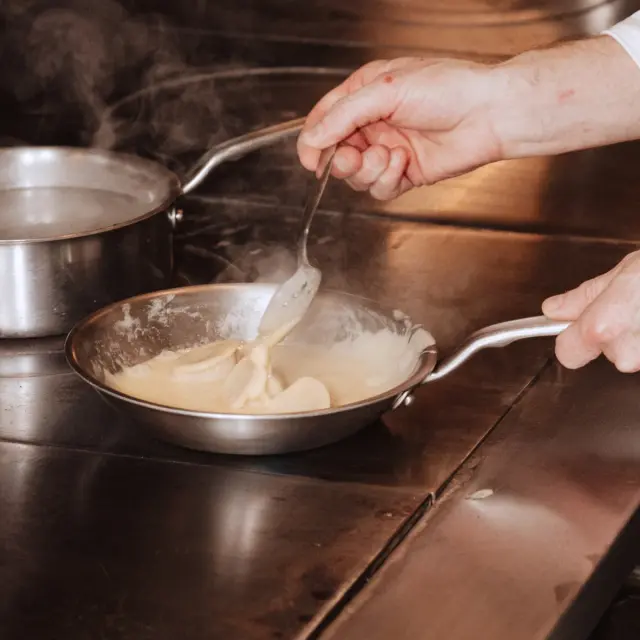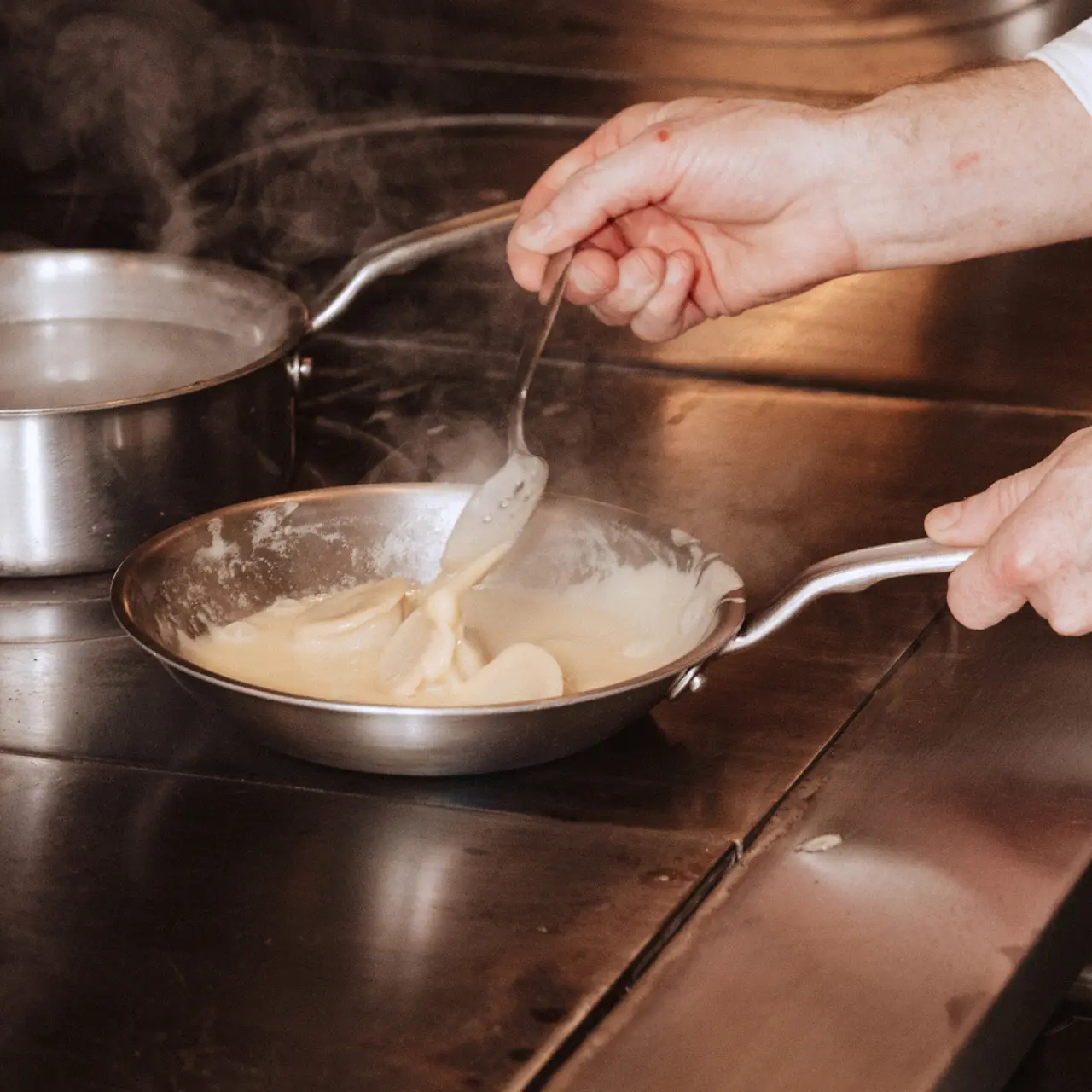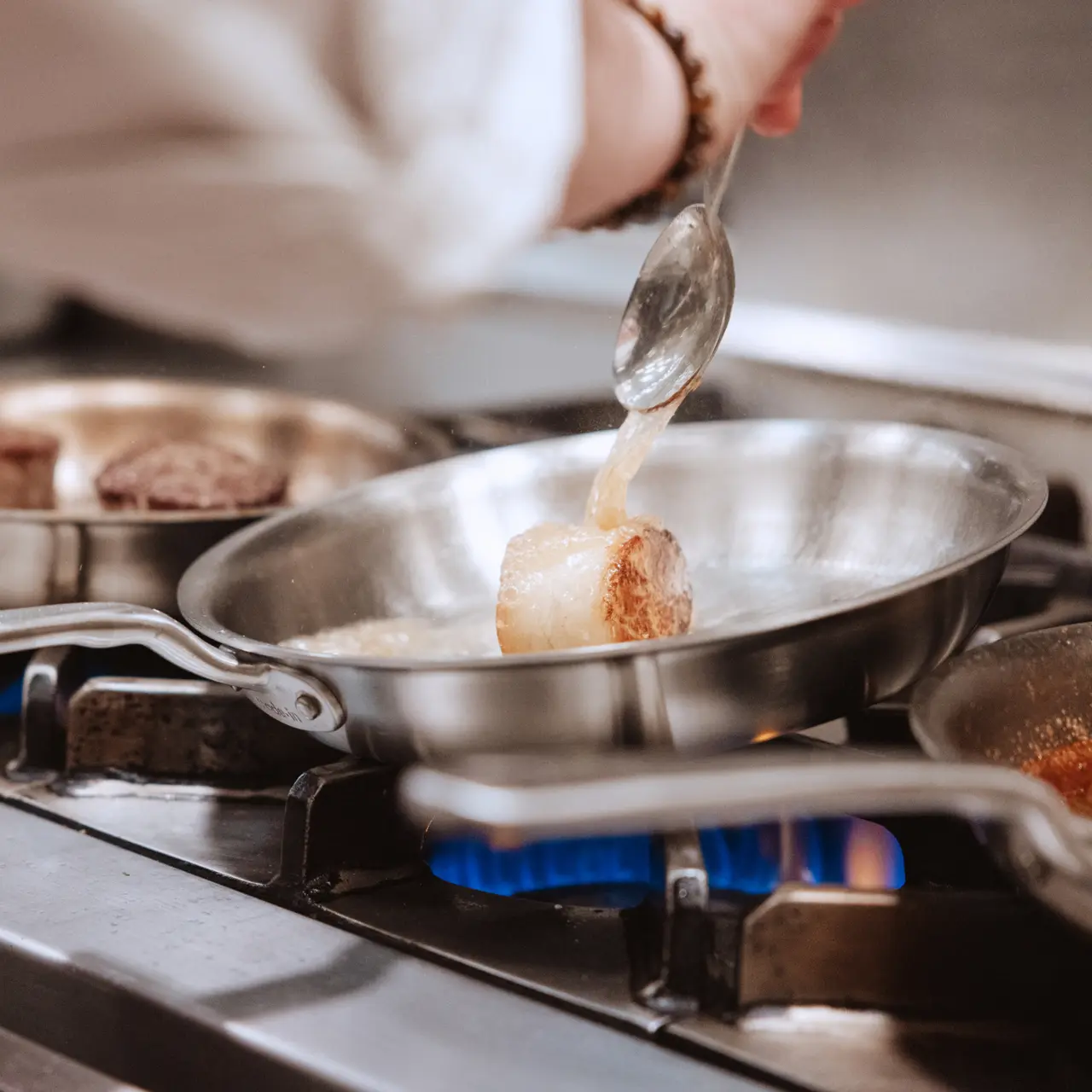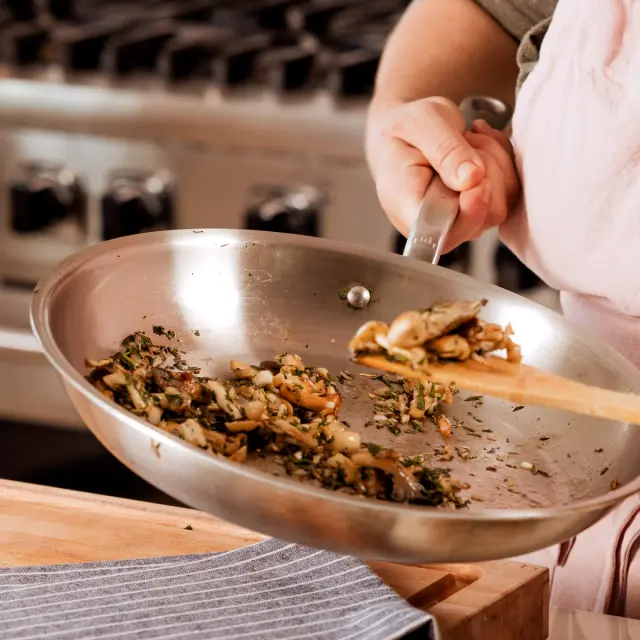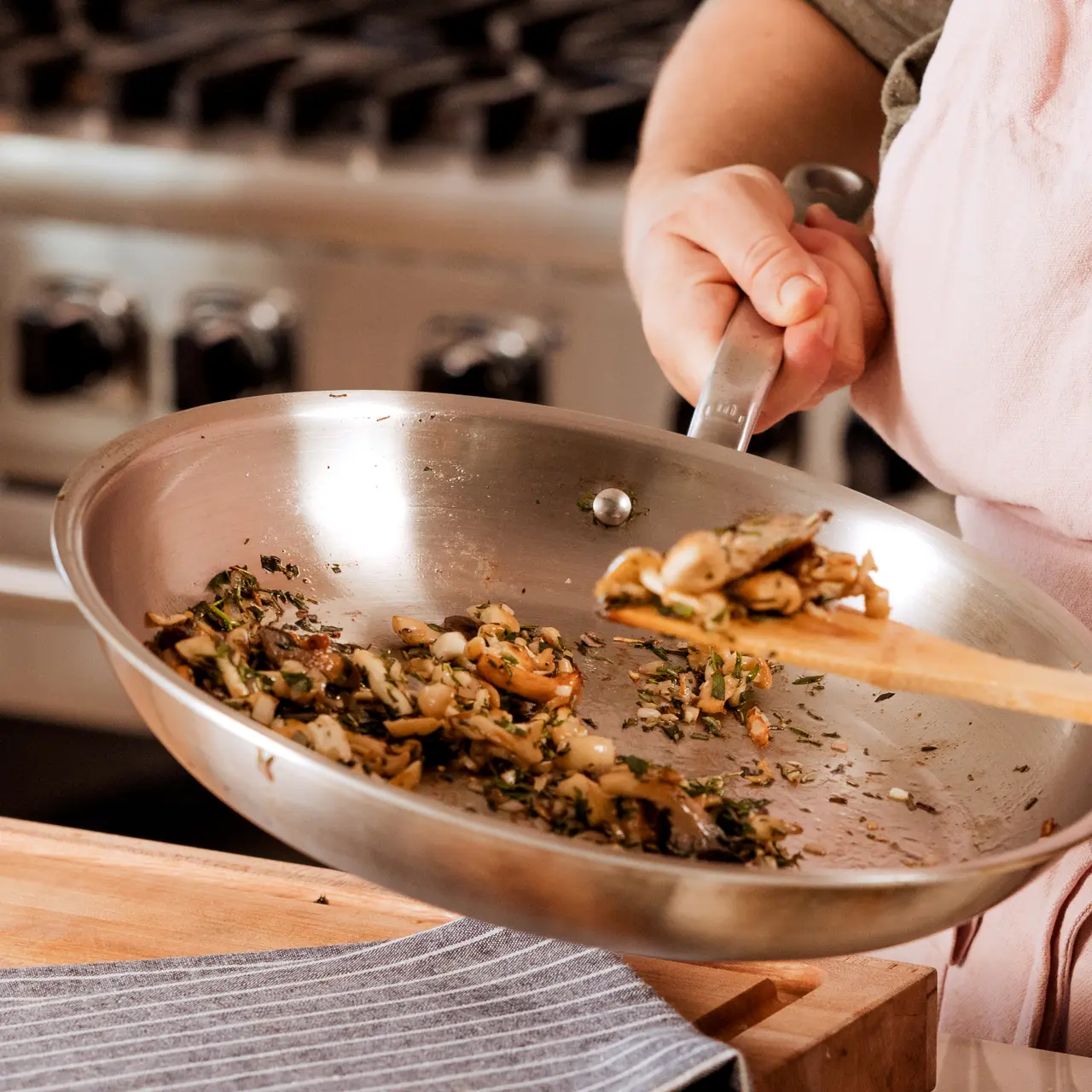When it comes to buying cookware, it isn’t enough to just know which specific products you want—it’s also vital to know what size you need, especially for everyday tools like frying pans.
Because there are so many different frying pan sizes to choose from, it can be overwhelming to choose the best one when shopping for a frying pan—especially considering that the differences between these sizes aren’t as apparent as they are with volume-based cookware, like saucepans.
While it’s true that a 10” and 12” frying pan can handle many of the same tasks, there are still advantages to smaller and larger sizes—a big reason we recommend having at the very least a small, medium, and large pan at your disposal. Let’s get into it.
How are Frying Pan Sizes Measured?

Frying pan sizes are determined by a pan’s overall diameter (wall top to wall top), not the diameter of its cooking surface (base edge to base edge).
Due to design differences with regard to how steeply their walls rise, it’s very common to have two 12 inch pans that have different cooking surface measurements. For example, the cooking surface of our 12” Stainless Steel Frying Pan is 9.5 inches, whereas the cooking surface of our 12" Blue Carbon Steel Frying Pan is 9.25 inches.
Furthermore, cookware size categorization oftentimes includes rounding down to the nearest inch—but never up. It's very common for a frying pan to measure in at slightly above its marketed length, meaning a 12” designation will simply mean the pan measures in between 12 and 13 inches. This elongated window allows for more freedom of design.
For the sake of consistency, when referencing general frying pan sizes we’ll be using the measurements of our award-winning Stainless Clad Frying Pans.
6" Frying Pan
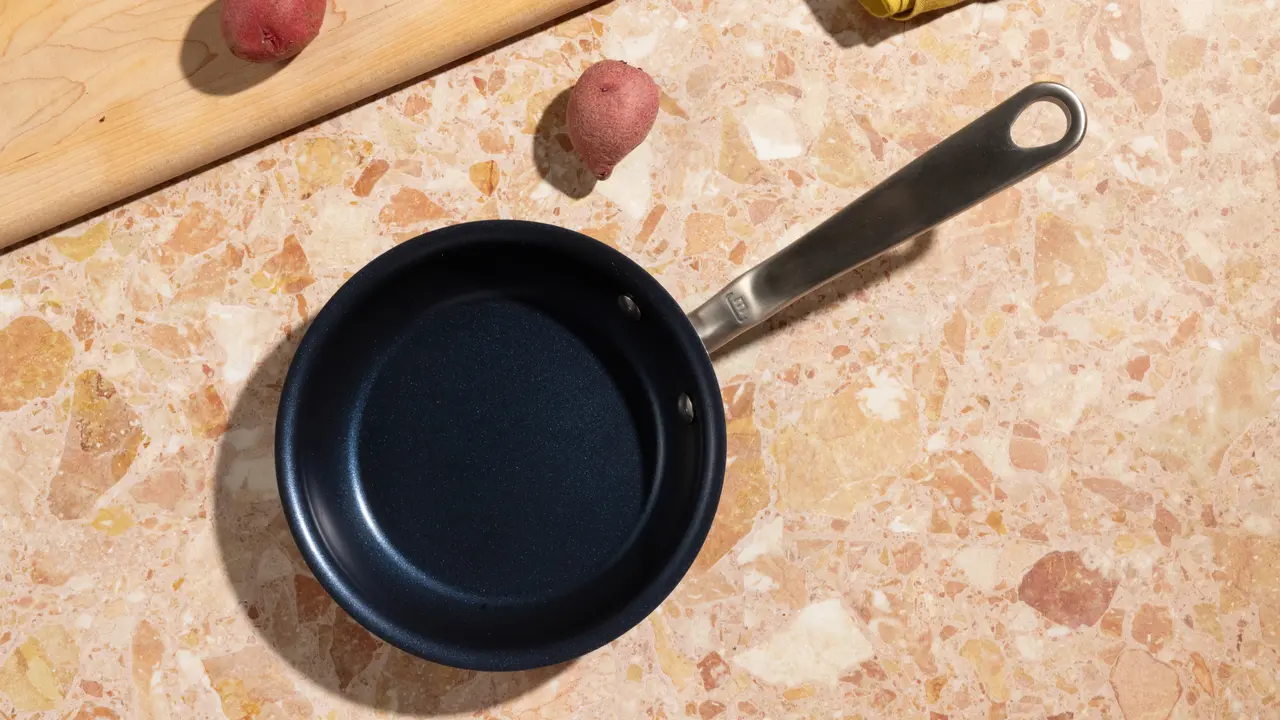
Benefits of this size: The compact cooking surface area of this pan means your ingredient is getting the full attention of evenly-distributed heat from both the bottom and sides of the pan.
Commonly used for: Single servings of dishes like Dutch babies, frittatas, or pancakes; one fried egg or chicken breast; toasting spices or nuts; garlic confit, garlic butter, brown butter, or other sauces for finishing dishes; sauteing a small amount of vegetables like mushrooms.
Total diameter: 6.84”
Cooking surface diameter: 4.72”
Length: 13.88”
Depth: 1.26”
Weight: 1.2 lbs
8" Frying Pan

Benefits of this size: A smaller pan means more evenly distributed heat and the ability to reach high temperatures due to collateral heat exposure from the pan’s sloped sides.
Commonly used for: Single servings (like one fried egg, steak, or chicken breast), making thick, fluffy omelettes (the eggs are forced upward due to the smaller cooking surface), sautéing vegetables for a side dish.
Total diameter: 8.5 inches.
Cooking surface diameter: 5”
Height: 2.75”
Length: 15.25”
Depth: 1.75”
Weight: 1.75 lbs
10" Frying Pan
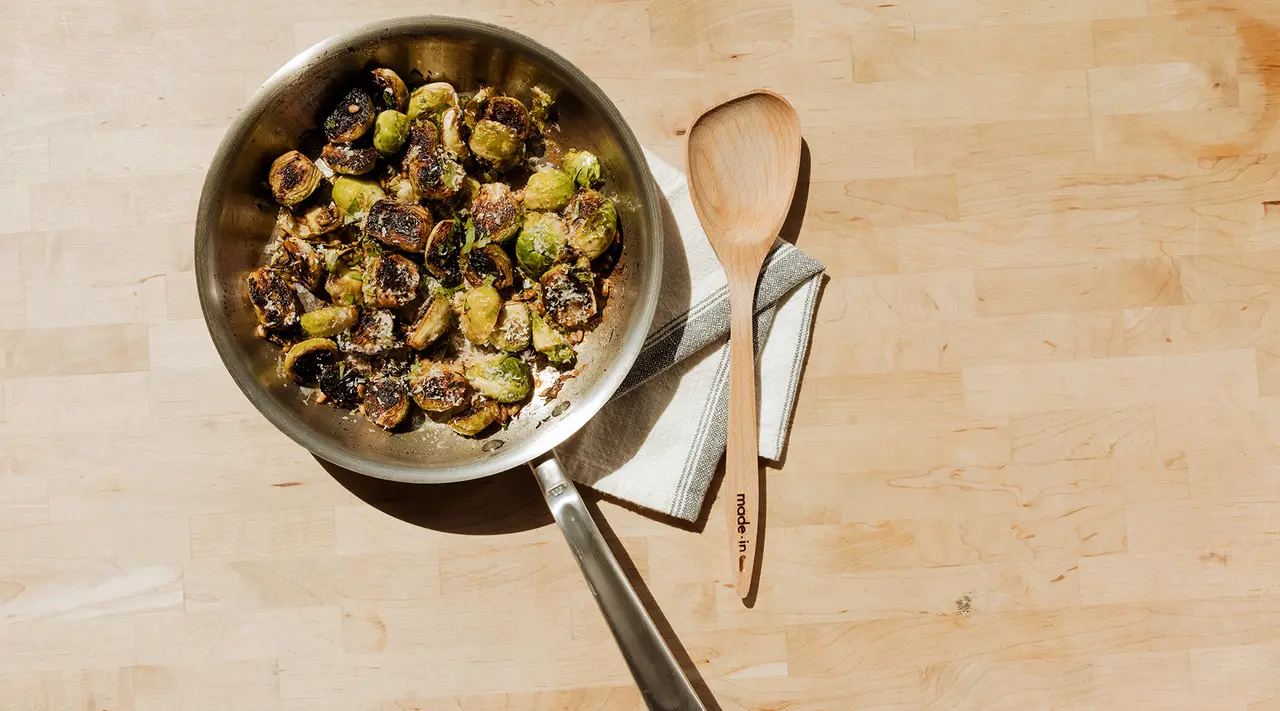
Benefits of this size: A medium pan means a middle ground where more can fit in the pan without overcrowding. with a minimal sacrifice of heat retention.
Commonly used for: 2 to 3 servings of food (i.e., frying 3 eggs or 2 chicken breasts) frying latkes, reheating leftovers, sautéing a large amount of vegetables.
Total diameter: 10.5”
Cooking surface diameter: 7.5”
Height: 3.5”
Length: 18.5”
Depth: 1.75”
Weight: 2.25 lbs
12" Frying Pan

Benefits of this size: A large pan means a large amount of food can be cooked in it at once without overcrowding the pan. It also means greater heat retention, as there is more material available to hold heat.
Commonly used for: Frying 4 eggs or 3 chicken breasts, frying bacon strips without having to trim the ends, making a pan pizza, galette, or Dutch baby (12” is the ideal size for oven-safe baking pans).
Total diameter: 12.5”
Cooking surface diameter: 9.5”
Height: 3.5”
Length: 20.5”
Depth: 1.75”
Weight: 3 lbs
14” Frying Pan
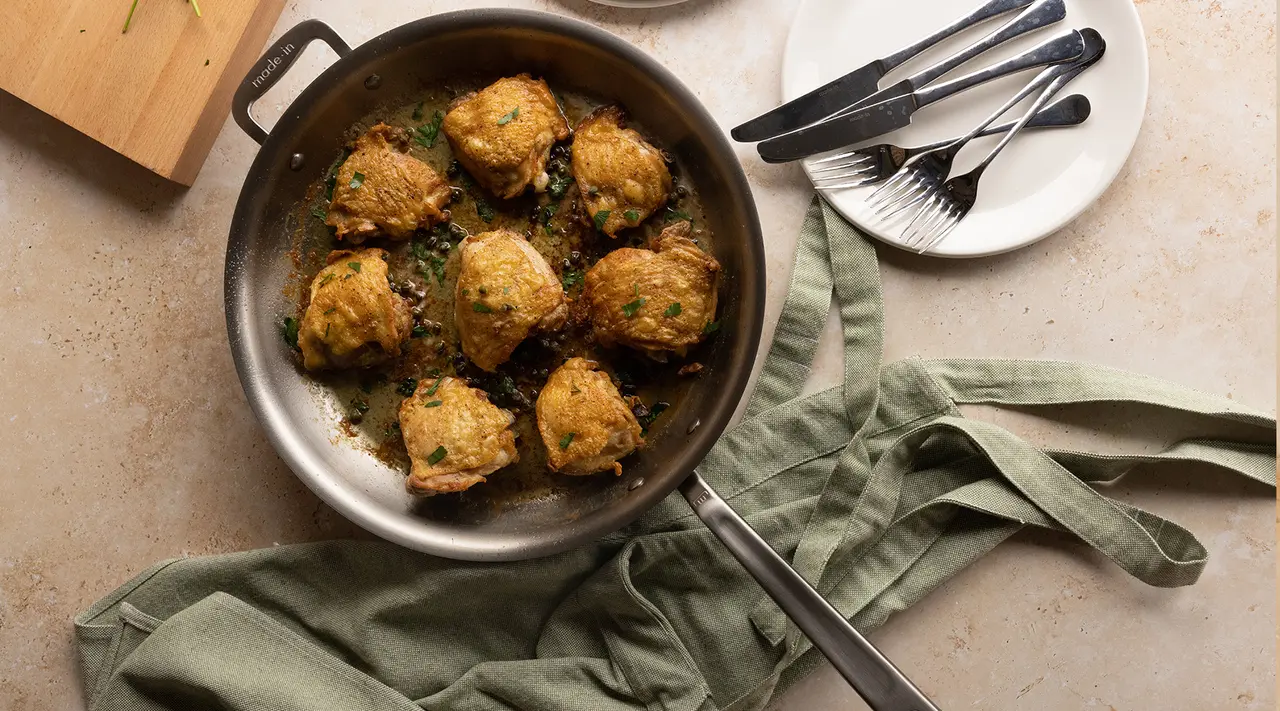
Benefits of this size: A pan of this size enables you to feed large groups—or just meal prep with maximum efficiency—without the need to get out other cookware.
Commonly used for: Large portions or feeding whole families (8 chicken thighs can fit comfortably), searing 2 steaks, frying 6 eggs.
Total diameter: 14"
Cooking surface diameter: 12.5"
Height: 3.5”
Length: 26.5”
Depth: 2.07”
Weight: 4.7 lbs
Which Frying Pan Size Is Best For Me?
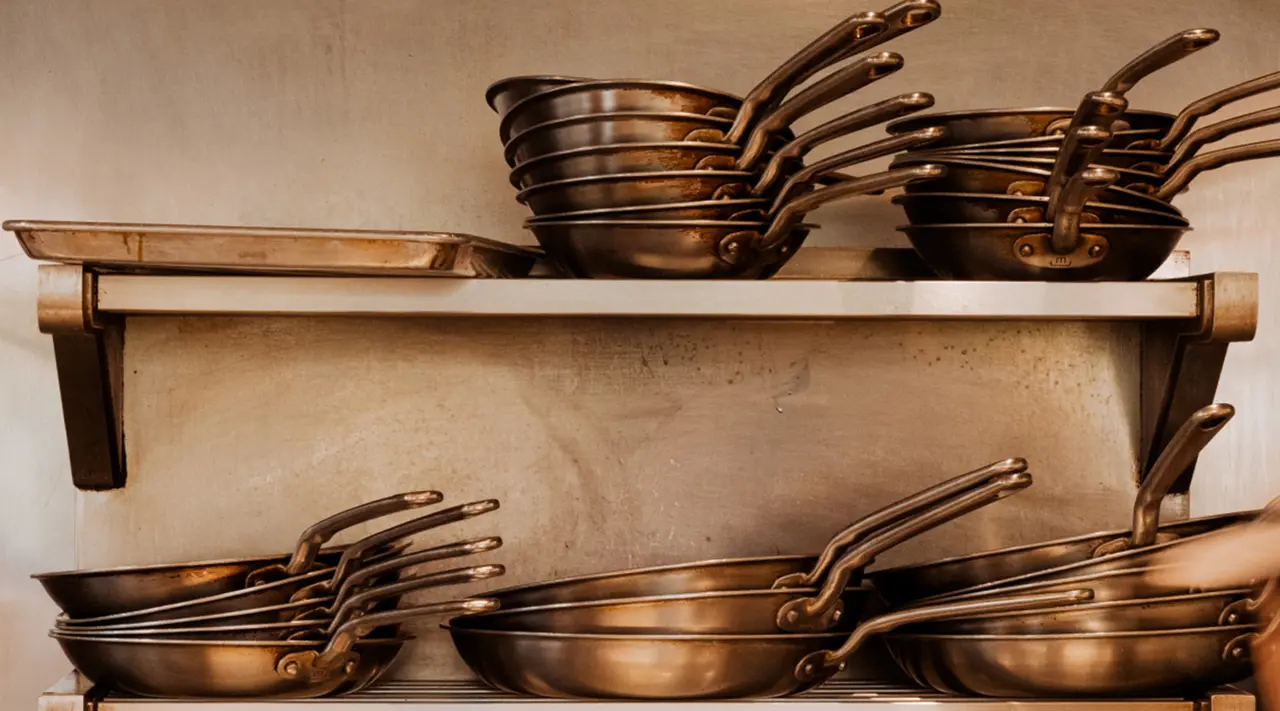
The prevention of overcrowding should be the first order of business when it comes to deciding between sizes, as overcrowded ingredients will cook inconsistently (and take longer to do it).
However, there are some cases in which having a larger or smaller sized pan matters for more than just the volume of what’s being cooked. If you have a small kitchen, only cook for one to two people at a time, or just don’t cook that often, you’re likely okay with a small- or medium-sized pan (8” or 10”). If you collect cookware, cook more nights than not, and have multiple mouths to feed per night, then a larger size pan (12” or 14”) is ideal.
What Matters More, the Material or Size?
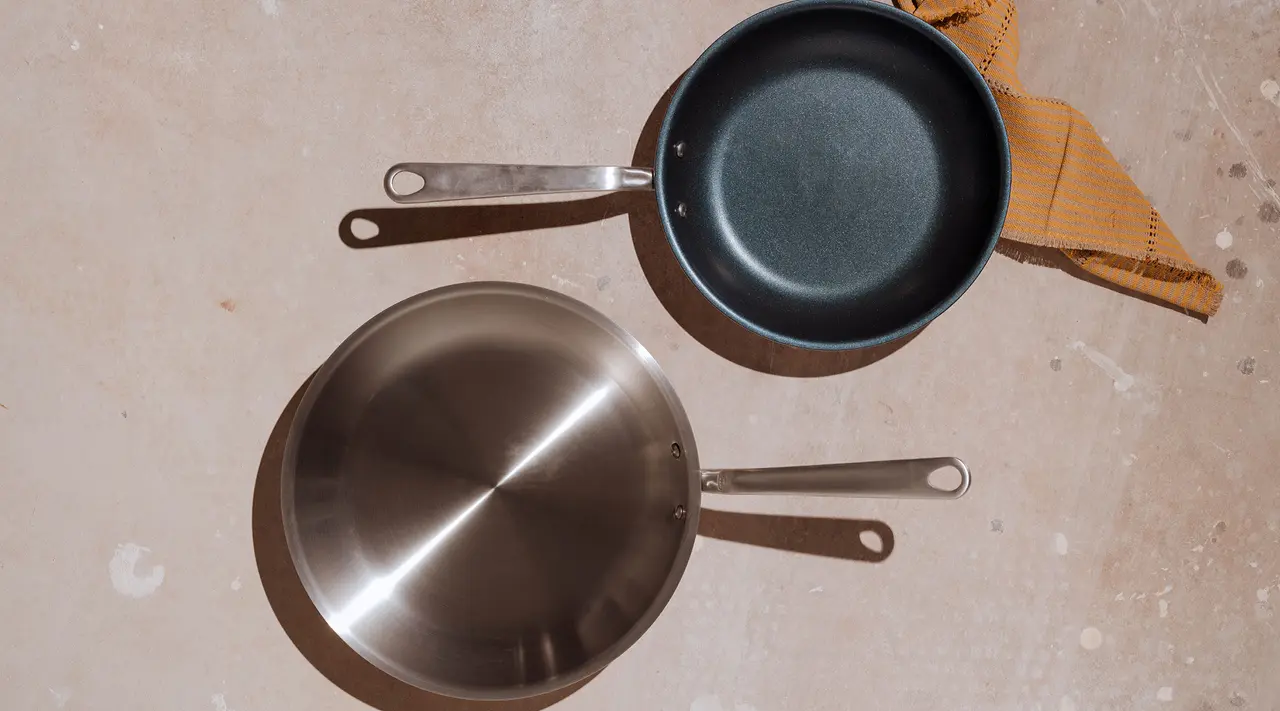
What your frying pan is made of and how big your frying pan is are the two most important qualities when it comes to selecting the skillet for you. Typically, the selection process starts with material and then gets more specific with size. This is because the difference material makes is larger than the difference made by size.
Below is a brief snapshot of the differences between the most common frying pan materials—be sure to check out our guide for a more in-depth explanation.
- Stainless steel: A chef-loved, versatile pan that can accomplish a wide variety of kitchen tasks like sautéing and pan frying.
- Non stick: The ideal choice for delicate foods, like fish and eggs, followed by easy cleanup.
- Carbon steel: Heavy duty and perfect for accomplishing stovetop and grill sears, chars, and crispy textures.
- Enameled cast iron: A heavy-duty Southern staple that’s ideal for anything from sears to sautés.
Ready to Cook?
No matter what size you choose, it’s important to opt for a high-quality pan that gives you the results you want, night after night. Our chef-loved pans have been put to the test in the world’s best kitchens and, regardless of size, produce meals worth sharing.


